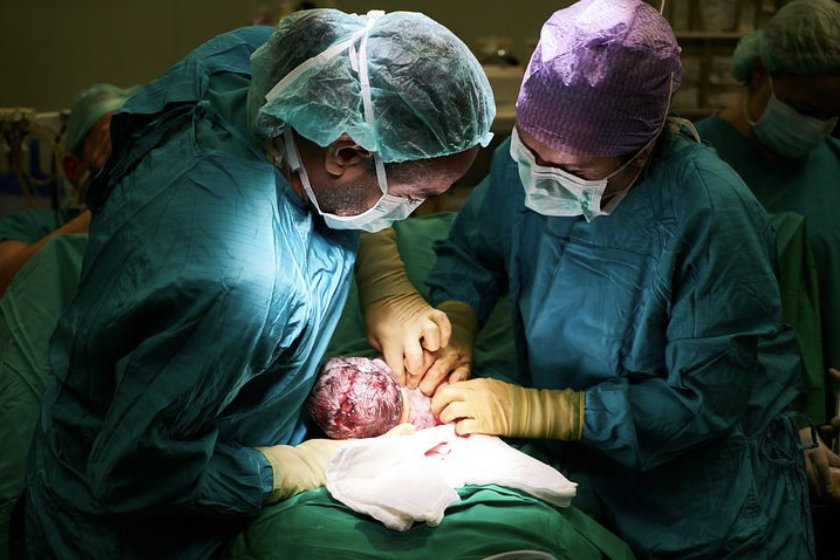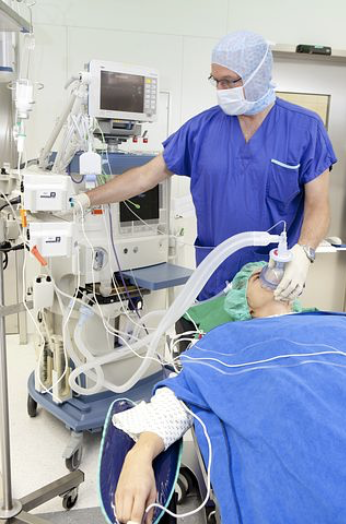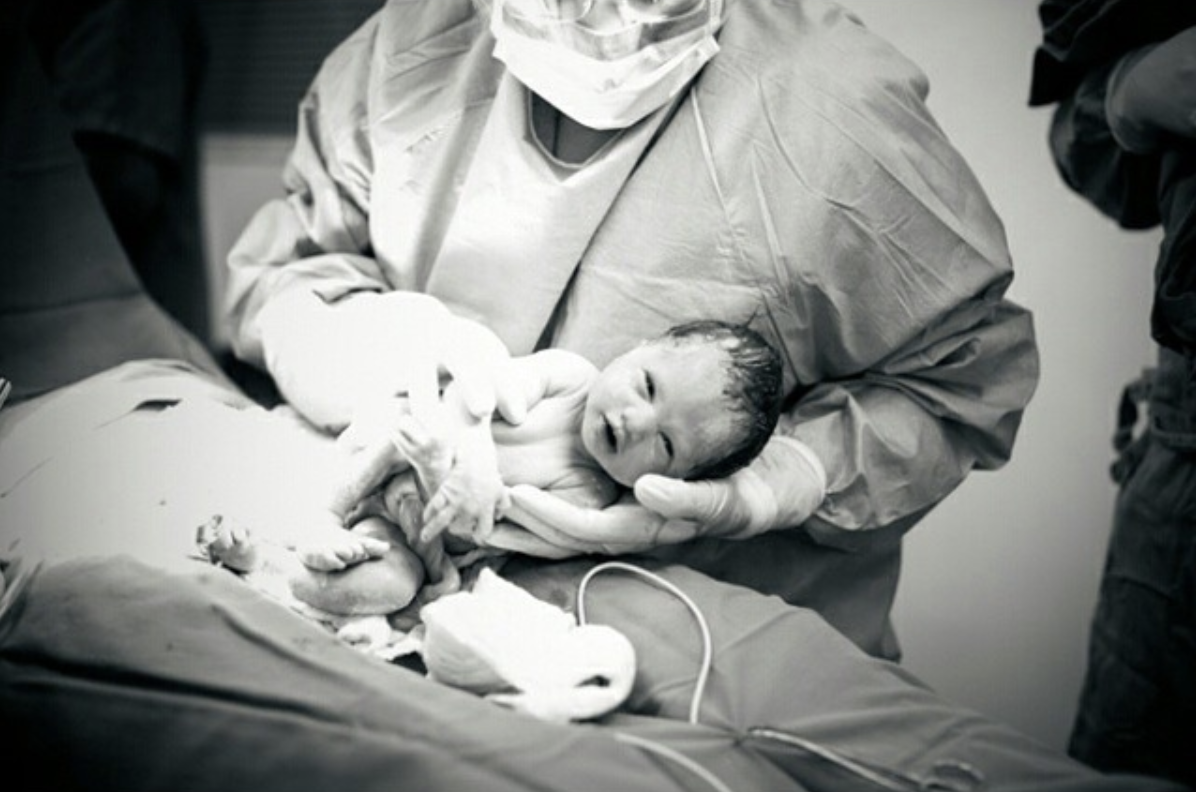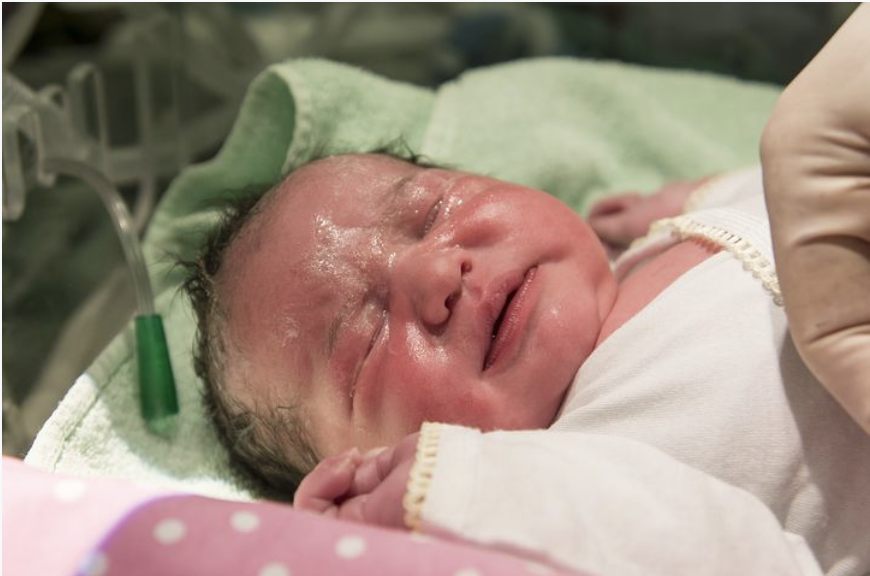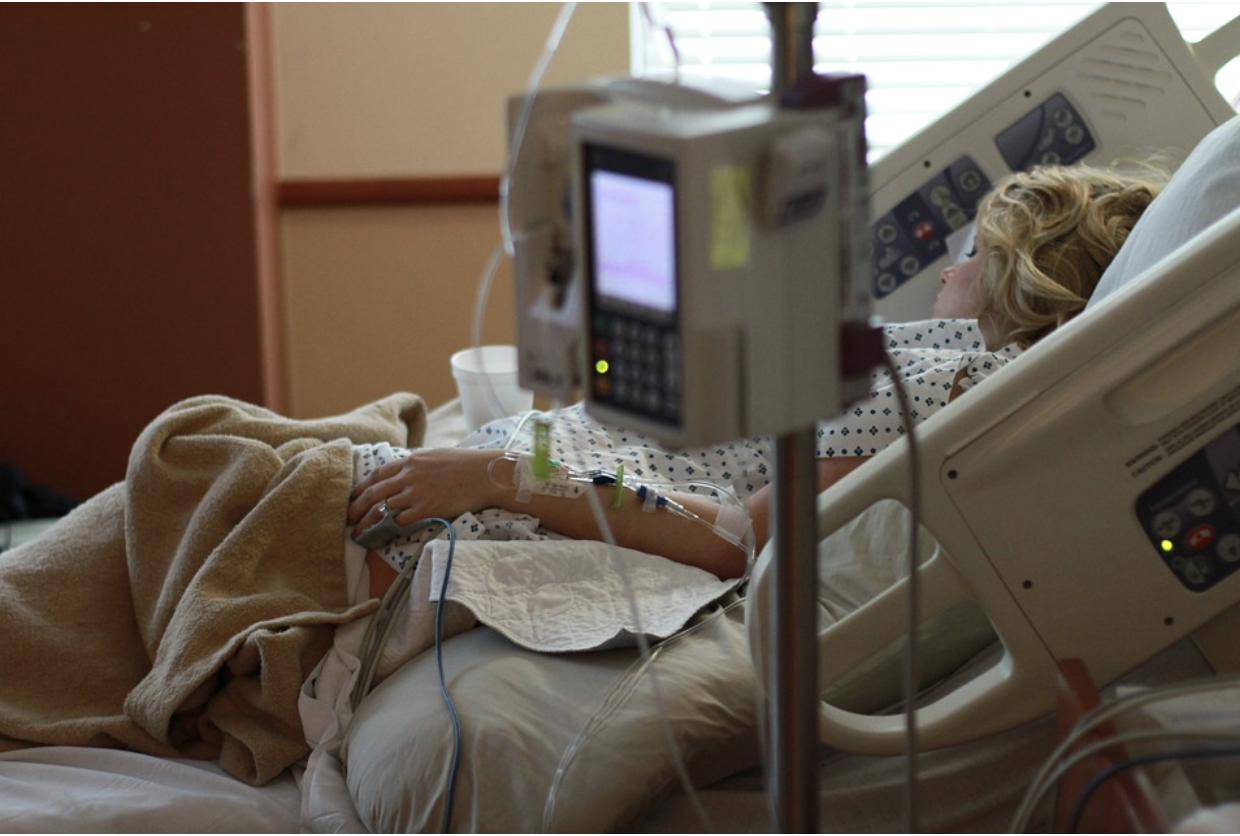We’re discussing the pros and cons of epidurals! What is their place in the medical world and should they be as commonplace as they are?
Modern medicine today encourages epidurals like water. This doesn’t make epidurals inherently bad - they are simply being misused and overused. It is time we tell the truth about epidurals. Physician, neonatologist and researcher Dr. Michael Klein, points out in his three part Science and Sensibility blog analysis of the evidence
on epidurals, “Women need to be accurately and completely informed of their choices for pain relief in labour before they can provide their true consent. No matter how well intended, epidural analgesia increases the likelihood that women will have a variety of other interventions, especially if the epidural is given without specific medical indications….When used routinely as a first line agent, epidural analgesia can create problems that could have been avoided.”
Epidurals can be literally life-saving in a dire situation when a cesarean birth or medical induction of labor is needed, and there are times when they are indeed warranted, but there are serious concerns about their use in a childbirth process that is proceeding normally and healthily - when their risks outweigh their benefits.
I will hopefully give you an enlightening look at the different sides of epidurals, including the situations when they are very necessary. You making an informed decision for yourself, is what’s important here. But do your research.
Learn more about the intricate process of labor and delivery, as well as what your mind and body are doing during each stage, the purpose of its sensations and how to best cope with them. I go into this thoroughly in my online Love Your Birth course. The more you really understand what is going on, the less you will fear it, the more you will trust and lean into it. And know your strength and capabilities. You’d be surprised at what you’re able to withstand and overcome!
It is crucial to prepare for coping with natural labor, even if you think you will want or need an epidural, as you will still have to experience parts of labor, it is not always an option depending on your health history, the anesthesiologist does not often come right away, and the epidural does not always work adequately.
How do Epidurals Work?
An epidural is an injection of a large needle in the lower back that pierces the covering of the spinal cord. Medications are injected through a tiny catheter threaded through the needle, into space surrounding the spinal cord and then they infuse the nerves nearby. These medications consist of usually a regional anesthetic and an opiate.
The anesthetic drugs temporarily block the sensory nerves which usually create the numbing and this, in turn, inevitably blocks the motor nerves with some degree of paralysis. The opiates are included because they increase the effectiveness of the anesthetic, allow for less dose required, while working to decrease the blockage of motor nerves at the same time.
The Cons
The true downturns of using an epidural occur in a birth that is perfectly healthy and normal are many, according to the research. This will then lead to a cascade of other risky and dangerous interventions just by taking a drug in which there was no need in the first place. In fact, epidurals increase the risk of requiring a C-section, especially when given too early - but there are plenty of other reasons for this.
According to Dr. Kelly Brogan’s research, there’s been a 60% rise of C-sections since 1996. A study has shown that a prolonged second stage of labor is the main reason for most C-sections. This prolongation can be directly linked to the use of epidurals, for many reasons, including a mom’s decreased ability to push effectively and her needing to be in supine positions that make birthing more difficult, as it goes against gravity and pelvic capacity is at its smaller dimensions.
Related: The Unnecesarean Birth Story - How It Might Have Been Prevented
What happens after this prolonged stage? A myriad of interventions to “help” induce the birth: “food and drink restriction, immobilization, IV fluids, bladder catheter, medications to augment labor, and continuous monitoring.” All of these will only encourage the need for even more intervention, like vacuums, forceps, episiotomy and increased probability of more severe perineal tearing into the anal sphincter and rectum, or major abdominal surgery. All medications, invasive interventions and operative deliveries risks birth trauma and injury to the baby as well as the mother.
Epidurals prolong all stages of labor. They increase the incidence of fever for mom, which leads to IV antibiotics in case of infection that most likely is non-existent. Antibiotics disrupt the microbiome and lead to all the associated health risks of interfering with the healthy balance of bacteria within the body for both mom and baby. It can also lead to signs of fetal distress, which then lead to other interventions from needing oxygen to emergency surgical delivery.
This drug administration does upset the normal hormonal balance during labor. While the very nature of an epidural is to alleviate at least some of the pain and so easing a good chunk of stress, some stress during labor is actually quite good for both mother and baby.
Cortisol (the stress hormone), for example, lessens mom’s exhaustion; it gives the mother energy to push, and heightens her euphoria and sense of excitement—a big part of the natural birth experience which we’ll get into a bit later—and this euphoria actually increases bonding with the baby. For the baby, the healthy “stress” of being born turns many biological processes on during the whole birthing process, like the breathing instinct at birth, which eases transition to adjusting to life outside the womb. No surprise that babies may need more assistance to breathe.
There are so many effects that also take place in the aftermath of the birth since an epidural is a narcotic that’ll pass from mother’s circulation, through the placenta into the baby’s bloodstream.
Evidence supports risks to the baby from epidurals, that include reduced muscle tone, poor feeding, jaundice, withdrawal, and sensorimotor impairment. Epidurals have been linked to failure to establish breastfeeding and this is not to be taken lightly, as breastfed babies have much healthier outcomes and less health risks than formula fed babies. Newborns also can get a fever and increased heart rate from the epidural, without having an infection, but separation from mom and extensive work-up in the neonatal intensive care unit ensues for evaluation, including blood tests, spinal tap, and precautionary IV antibiotics. Renowned childbirth educator Penny Simkin highlights that “epidurals can result in short - term subtle neurobehavioral effects, such as irritability and inconsolability and decreased ability to track an object visually or to shut out noise, bright light. There are no data on potential long-term effects....Decreased infant responsiveness may lead to long-term consequences for the parent-infant relationship... (risking) labels of “difficult child” or “incompetent mother” (self imposed or by others).”
The mother can experience some annoying but distressing side effects - mostly from the medications entering her bloodstream and/or administration error, like itching, nausea, shivering, spinal headache, residual numbness, tingling and weakness, backache, as well as alarming side effects, like difficulty swallowing and breathing, rare permanent nerve damage, convulsions, respiratory paralysis, cardiac arrest, and even death. Evidence based care expert Henci Goer points out in her ongoing evaluation of risks and benefits of maternity care, that epidurals cause, “Somewhere between 1 in 1,400 and 1 in 4,400 women to experience a life-threatening complication.”
This is some very scary stuff! And yet, epidurals aren’t so much the problem as are our society’s tendencies to consider them such a benign and advised common practice for the majority of laboring women.
Epidurals necessitate hospital birth, and eliminate the home and birth center option, which are associated with better health outcomes physically and emotionally for mom and baby, when it comes to low risk healthy childbirth. Dr. Klein poignantly elaborates on the concerns that epidurals have medicalized birth so much so, that they increase the demand on the nurse to pay greater attention to the technology of all the resulting interventions, and consequently have less time, experience and skill to provide needed hands-on and emotional support for the laboring woman.
Disruption of the normal hormones of labor with epidural use can cause the laboring mom to feel detached from her own childbirth process and to becomes more of an observer than a participant. Studies indicate that women who had an epidural may have had less pain, but were most dissatisfied with their experience even up to a year later. The provider and nurse can no longer assess labor progress by observing the mother and must rely on the monitor - which makes the experience more impersonal - and vaginal exams - which are invasive and increase risk of infection. Use of epidurals and the anesthesiologist alone raise the cost of care, and it increases exponentially with the cascade of hospital interventions that result.
So, when are epidurals medically appropriate? In an urgent or concerning health situation when there are serious complications, but not in a normal, healthy, natural birth. They can be also psychologically appropriate, in individual cases.
The Pros
One of my founding philosophies in helping women to have a safe, healthy and transcending birth experience is that a birth (of any kind, in all settings!) isn’t a medical procedure—it’s a natural and miraculous process of life. It’s not in and of itself a dangerous crisis.
That being said, I’d like to affirm that an epidural has its place in childbirth.
When a labor isn’t proceeding normally, when there’s a prolonged or arrested labor or the mother is experiencing exhaustion, extreme pain and/or anxiety, the compassionate use of an epidural could be the answer, and can enable her to relax, rest and progress to vaginal delivery. There could be a real medical need for medications to help induce or augment labor, which make labor sensations much more painful. As a last resort, an epidural can help relieve the pain and stress from an emergency situation.
A woman suffering from preeclampsia, for example, who receives an epidural anesthetic, will likely not have a prolonged second stage of labor. Epidural tends to lower blood pressure, which is a benefit in cases of hypertension.
An epidural could also be an advantage during a major operation like a cesarean; in most cases, it carries much less risk than general anesthesia and is a great alternative to being unconscious from the high doses of those medications.
Epidurals can provide relief or reduction of pain without impacting mother’s mental state. Since birth by C-section is still a birth, an epidural can help the mom stay fully alert and pain-free during this operation. She’ll be involved, fully capable of holding and bonding with her baby even after a C-section operation, as opposed to being put out from a general anesthetic.
Keep in mind that I’m speaking of C-sections that are necessary because of endangering complications and serious issues. This is not the same as C-sections that are caused by epidurals themselves like we spoke about before. Cesareans in and of themselves are supposed to be the last resort, and indicated for serious life threatening health problems —the fact that we have them more and more often in America and that they are treated as a normal procedure during a labor is a sore reflection of our society’s ideas of pregnancy and birth.
Related: How to Plan, Have, and Rock Your VBAC
How do You Prepare for an Epidural-Free Birth?
Photo by @senhoritasfotografia
Not only is a natural birth the healthiest way to go but science is more and more discovering ancient truths about birth.
The women who come to me want to have their pregnancy and labor in their own way and they don’t want to numb themselves to the healthy and normal sensations of giving birth. It is, in fact, your own birthright as a woman to have this right of passage into motherhood. The women I work with want to feel that empowerment and the high of successfully bringing their child into the world on their own.
Understanding what your body is capable of can begin to give you the confidence you need to begin planning your natural birth. My Love Your Birth course can help you prepare for the entire process from beginning to end. You’ll equally learn how to cope with and handle labor pains...so much so that you can love your experience no matter how challenging. The right preparation really begins with a shift in mindset, not just about labor but in what your body is capable of doing.
“In labor, such high-levels [of beta-endorphins] are released and help the laboring woman to transcend pain, as she enters the altered state of consciousness that characterizes an undisturbed birth. In the hours after birth, elevated beta-endorphin levels reward and reinforce mother-baby interactions, including physical contact and breastfeeding as well as contributing to intensely pleasurable, even ecstatic, feelings for both.” -Sarah Buckley, MD.
Photo by @senhoritasfotografia
My rate of successful women having natural births is 93%--the other 7% of cases had complications that required medical attention or surgical intervention. But, in over two decades practice as a homebirth midwife, I’ve never once had transfer a mother to the hospital for an epidural or any other pain medication because she couldn’t cope with sensations of normal labor. Never once! It is not that women who come to me have different bodies. It has more to do with how well they prepare themselves in advance, their attitudes and mindset, and how they are cared for and supported during birth.
Women are able to do what comes naturally when they are prepared, supported and encouraged to follow their own desires for their birth. Women have been giving birth naturally around the world since the beginning of time. Today we interfere more with it, and sometimes we get in our own way. Have faith that your body and nature both have your back—they were designed to know what to do! We just need to step aside. That takes advance preparation in the modern world, as well as care providers and settings that will have the same philosophy and expertise.
The physicality that is required to give birth has been compared to the performance of an endurance athlete! There’s an inherent strength in every woman to go beyond what she knows herself to be capable of. And when she does that, she is darn proud of herself; she has discovered her strength and capacity she can draw on for the rest of her life.
Learn as much as you can about what that is, about yourself and your body. The pride and joy that a woman experiences after giving birth naturally is overwhelming. So many mommas are overcome with their own capability to bring their child into the world.
Don’t deprive yourself of the sensations and transcending experience. You are able and you are supported!
I have a holistic approach to life, including healing after pregnancy and birthing. Nothing replaces abdominal toning and exercise for restoring muscle strength and tone - which I encourage for all mamas as soon as they feel up to it postpartum. Nothing replaces touch, slow deep abdominal breathing, and a 'love your postpartum body' perspective that I promote. But I have found many mamas simply feel comforted by this support garment, especially early postpartum and temporarily as needed....to be used without forfeiting abdominal toning and strengthening exercise, breathing well and touch. I have found Bellefit supportive garments to help like they use belly binding around the world such as in Indonesia. They do aid in early postpartum healing and provide support many mamas feel comforted by. I deal with human beings and the reality is many postpartum mom's struggle with body image, feel frustrated that getting back to themselves takes longer than expected. Being into holistic health and healing includes being sensitive to real human struggles - the mind, body, heart and soul of each person and their unique situation. Having helped countless women with these issues after having a baby as a midwife, I have found many still love that binding and feel better with this support, and ability to fit into their pre-pregnancy clothes comfortably and sooner than they would if they went through a C-section or natural childbirth recovery without it - especially when they have to dress up and fit into a certain favorite outfit for a special occasion or wedding not long after having a baby. For more info on the Bellefit girdle, check out my blog about it here. Have a Great Postpartum Recovery (with a little help from Bellefit)!


